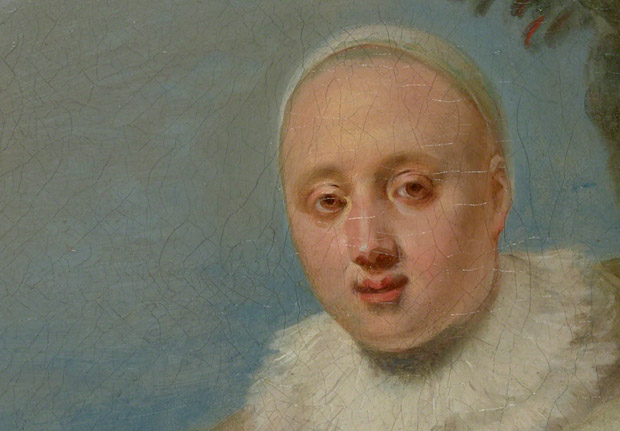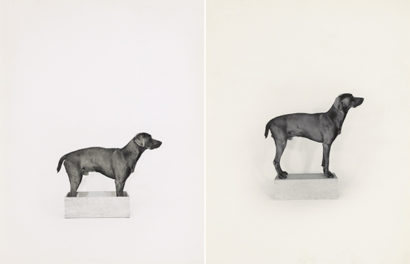Antoine Watteau is famous for his theatrical pictures of the 18th-century French megarich at their elegant balls and fêtes galantes. Theater of a different kind figures in The Italian Comedians, a beautiful and poignant painting that has just joined the Getty Museum’s collection.

The Italian Comedians, Antoine Watteau, about 1720. Oil on canvas, 50 3/4 x 36 3/4 in. The J. Paul Getty Museum, 2012.5
Characters from Italy’s improvisational comedy tradition greet us in full costume: rakish Scaramouche in his cape, sentimental Mezzetin holding his guitar, scrappy Harlequin peeking from the shadows, recognizable by his dark mask and diamond-patterned costume. Watteau loved to paint performers from the outdoor variety shows of his day, which featured singing, dancing, acrobatics, and the occasional satire on current scandals. Highbrow it was not, though the actors were as brilliant at roles, props, and artifice as any French aristocrat.
What holds your eye in this painting isn’t the costumes or the poses, but the central figure, Pierrot. Known as a buffoonish misfit and butt of vulgar jokes, here the clown is sympathetic, even vulnerable—head bared to skullcap, hand in pocket. He stands for our raw inspection in a way Watteau’s wealthy subjects, preoccupied with their own pleasures, never do.





Superbe article sur ce peintre français, une belle critique de l’art du 18eme siecle.
Merci.
Willy